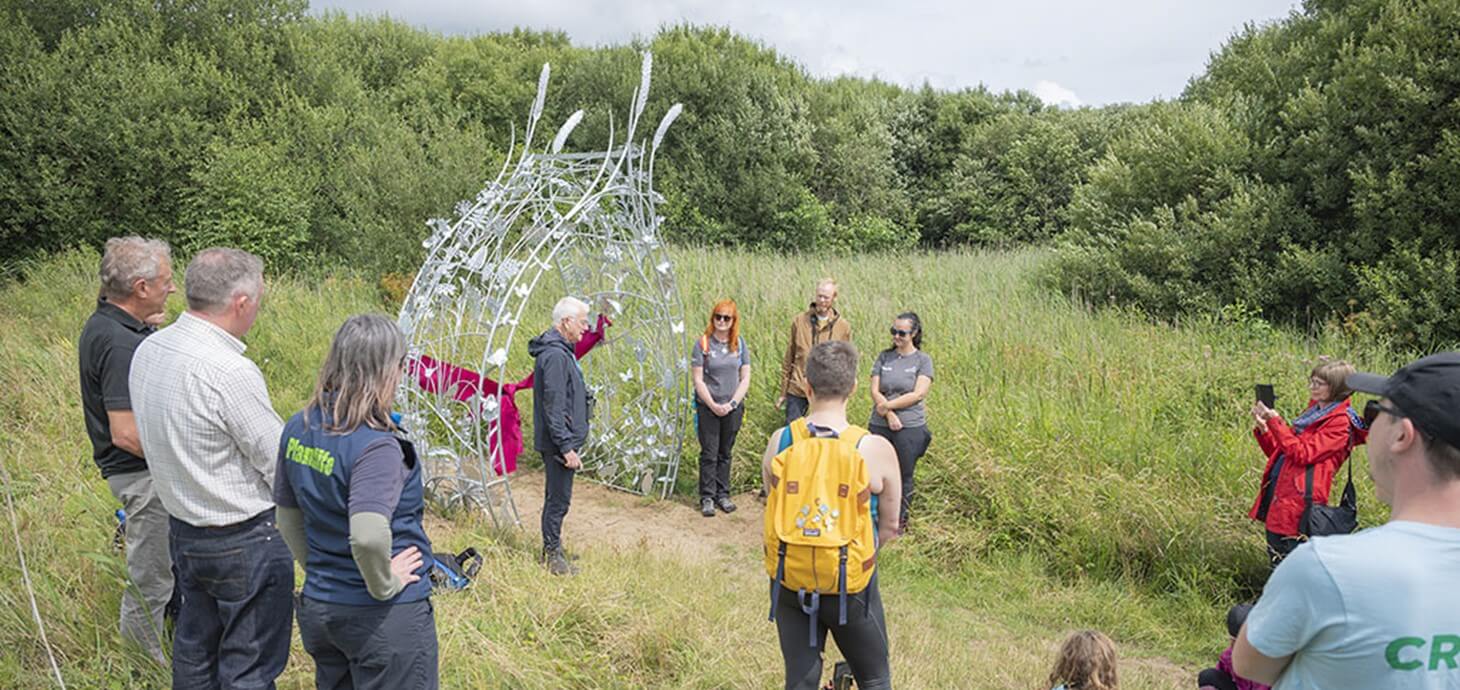
A new sculpture has been installed at Crymlyn Burrows Site of Special Scientific Interest, home to Swansea University's Bay Campus, to celebrate the wildlife and diversity of the protected coastal site and its importance to the local community.
Crafted by Welsh Artist Blacksmith James Eifion Thomas, the sculpture serves as a gateway to this protected site, incorporating key elements of the landscape and symbolising the commitment to preserve its habitat for people and wildlife long into the future.
Visitors of the Burrows and the wider community, as well as high-profile guests from Swansea University, Natural Resources Wales, Plantlife, and other partner organisations, attended a ribbon-cutting ceremony held on Sunday 16 July.
The event featured many family-friendly nature activities, including free refreshments, a Bioblitz, guided nature walks and a scavenger hunt, encouraging visitors to explore the area and witness first-hand the importance of Crymlyn Burrows.
Coastal sand dunes are listed as the habitat type most at risk of biodiversity loss in Europe, and Crymlyn Burrows is a vital refuge in an area of high development.
The dunes and salt marsh are a haven for rare and specialist wildlife, including dune tiger beetles and brown-banded carder bees and are also a space for both students and residents to connect with nature.
Swansea University, working together with Dynamic Dunescapes, Buglife and the landowner, St Modwen, has been carrying out habitat restoration works to improve the condition of the Burrows.
Ben Sampson, Swansea University Sustainability officer and Crymlyn Burrows Warden, said: "Crymlyn Burrows is one of the last remaining pockets of wilderness around the Swansea Bay coast, its dunes and marshes home to an amazing range of plants and animals.
“Events like this allow us to not only encourage the public to explore these areas and understand their significance but also collaborate with amazing organisations like the South East Wales Biodiversity Records Centre (SEWBReC) and Amphibian and Reptile Conservation, who, like us, are committed to saving disappearing habitats our wildlife depend on."
In time, a second sculpture will be installed at the other entrance to the Burrows – designed as a pair, this second sculpture will reflect some of the larger landscape features and influences of nearby Baglan Burrows.
On the vision behind the sculpture's design, Hannah Lee, Wales Engagement Officer for Dynamic Dunescapes, said: "The sculpture will really help to create a sense of arrival for people visiting Crymlyn. We've designed it to include elements of the site that local residents connect with the most, and you'll see it has butterflies, birds, dragonflies and more intertwined. We want it to represent not only the now but also the past and future of the site."
The event was co-hosted by Dynamic Dunescapes, in partnership with Swansea University, Plantlife, Natural Resources Wales, Neath Port Talbot Local Nature Partnership, Buglife, Amphibian, and Reptile Conservation Trust, Sands of LIFE, and the South East Wales Biological Recording Centre (SEWBReC).
The collaboration of these organisations has been a key element of the Dynamic Dunescapes project, which aims to restore coastal sand dune habitats for the benefit of people, communities, and wildlife across England and Wales.
Dynamic Dunescapes is a project to restore coastal sand dune habitats for people, communities and wildlife across England and Wales, supported by The National Lottery Heritage Fund and the EU LIFE Programme. Project partners are Natural England, Plantlife, Natural Resources Wales, National Trust and the Wildlife Trusts. Plantlife and Natural Resources Wales are leading the works in Wales. The Dynamic Dunescapes project, Swansea University, Natural Resources Wales and Plantlife are grateful for the support for this work from the landowners of Crymlyn Burrows, St Modwen.
Visit Sustainability and Wellbeing at Swansea University and Dynamic Dunescapes for updates on when the second sculpture will be installed.
